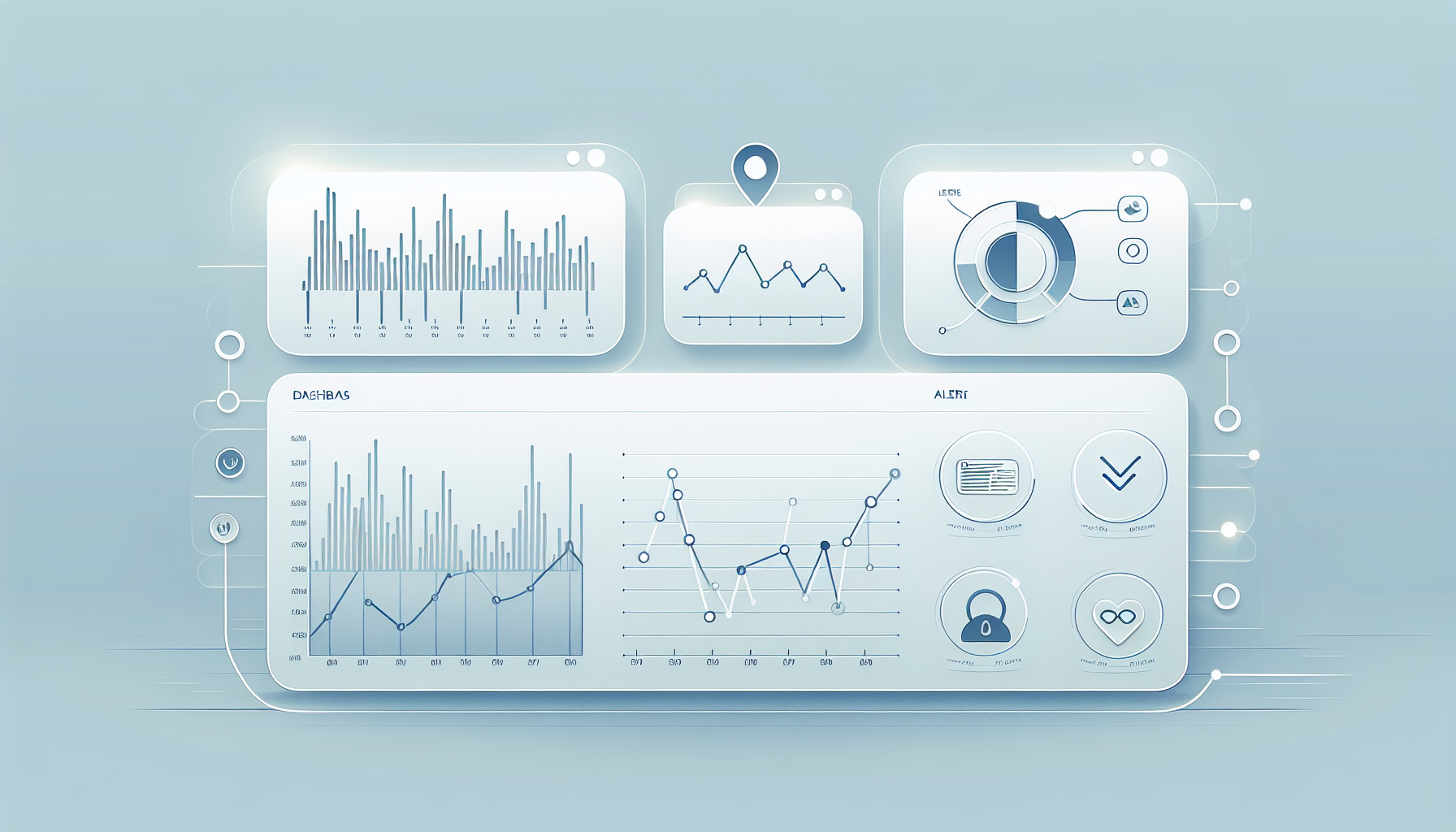Creating dashboards can often feel like trying to solve a complex puzzle. You might find yourself struggling with figuring out the right prompts to get ChatGPT to help you build the perfect visualizations. We’ve all been there, staring at a blank screen, unsure of where to start!
But fear not! If you keep reading, I promise you’ll discover a treasure trove of prompts crafted to elevate your dashboard creation game. With a little guidance from this blog, you’ll be able to engage ChatGPT effectively and turn your data into eye-catching, interactive displays.
From custom designs to real-time data integration, we’ve got you covered. Let’s dive in and transform your dashboard woes into wins together!
Key Takeaways
- Use specific prompts to guide ChatGPT for effective dashboard creation, ensuring targeted results.
- Incorporate step-by-step prompts to align dashboards with user needs and key objectives.
- Enhance data visualization using prompts for charts, graphs, and infographics to tell a compelling story.
- Make dashboards interactive by adding features like filters, tooltips, and user customization options.
- Integrate real-time data for current insights, setting up alerts for significant changes in metrics.
- Apply troubleshooting prompts to address common issues like layout problems and data integration errors.
- Explore examples of successful prompts to inspire your own dashboard designs and functionalities.

Best ChatGPT Prompts for Creating Dashboards
Creating an effective dashboard with ChatGPT starts with using the right prompts.
These prompts should guide the AI in generating helpful insights while maintaining user engagement.
Here’s a list of some of the best prompts you can use:
- Create a dashboard that visualizes sales data including trends and patterns.
- Design a project management dashboard to track task completion and deadlines.
- Generate a financial dashboard that displays revenue, expenses, and profit margins in a clear format.
- Build a customer feedback dashboard to showcase survey results and ratings.
- Develop an inventory management dashboard that shows stock levels and reorder points.
These prompts can help you start building dashboards that are informative and visually appealing.
Step-by-Step Prompts for Designing Custom Dashboards
Creating a custom dashboard requires a systematic approach to ensure it meets user needs.
Follow these step-by-step prompts when working with ChatGPT:
- Define the purpose of the dashboard: “Describe the metrics that need to be tracked for [specific goal].”
- Identify target users: “List features that would be beneficial for [specific user type] using this dashboard.”
- Determine data sources: “What data sources can be integrated for monitoring [specific metrics]?”
- Create layout suggestions: “Propose a layout for a dashboard that includes [list of key elements].”
- Request wireframe ideas: “Sketch a wireframe representation for a dashboard focusing on [specific functionality].”
Using these prompts, you can develop tailored dashboards that fit your organization’s needs.
Prompt Ideas for Visualizing Data Effectively
Data visualization is crucial for making complex information easy to understand.
Here are some effective prompts to help you visualize data with ChatGPT:
- Generate a pie chart representation of market share for different companies in [industry].
- Design a bar graph to compare monthly sales data across various regions.
- Create a line graph that tracks customer engagement metrics over time.
- Provide suggestions for creating heat maps to show geographical sales performance.
- Outline a dashboard layout that uses infographics for better data storytelling.
These visual prompts can transform numbers into compelling narratives, enhancing decision-making.
Interactive Dashboard Prompts to Enhance User Experience
Interactive dashboards keep users engaged and help them explore data more thoroughly.
Here are prompts that focus on making your dashboard interactive:
- Request features for filter options, such as “Add date range selectors to the sales dashboard.”
- Inquire about user-driven data drill-downs: “Suggest a way to allow users to dive deeper into [specific data].”
- Ask for pop-up information on hover: “What tooltip info should be included when hovering over [specific metric]?”
- Generate ideas for interactive alerts: “Create alerts for significant data changes in the [specific area].”
- Explore customization options: “How can users personalize their dashboard view based on preferences?”
Utilizing these prompts can greatly enhance the interactivity and overall user experience of your dashboards.

Prompts for Integrating Real-Time Data into Dashboards
Integrating real-time data can bring your dashboard to life.
This ensures users are always looking at the most current information available.
Here are some prompts to help you achieve this:
- Connect live data feeds: “Integrate real-time sales data from [data source] into my dashboard.”
- Set up automatic updates: “Create a mechanism for real-time updates every [specific timeframe] for [data metric].”
- Visualize dynamic data changes: “Show me how to display fluctuating prices in real time using a line graph.”
- Implement alerts for data changes: “Create real-time alerts for significant spikes or drops in [specific metric].”
- Combine multiple data sources: “How can I merge real-time data from [source 1] and [source 2] for a comprehensive view?”
Utilizing these prompts can significantly enhance the relevance and usefulness of your dashboard.
Tips for Crafting Effective ChatGPT Dashboard Prompts
Writing effective prompts is key to getting the best output from ChatGPT.
Here are some helpful tips to optimize your dashboard-related prompts:
- Be specific: “Outline the necessary metrics for a dashboard focused on [specific goal] rather than asking broadly.”
- Include context: “Describe a dashboard layout ideal for [specific user type] to ensure tailored suggestions.”
- Encourage creativity: “Suggest innovative ways to visualize [specific dataset] in my dashboard.”
- Make it iterative: “What additional metrics should I consider adding to my current dashboard?”
- Seek examples: “Provide examples of industry-standard dashboards for [specific sector].”
Following these tips can help you generate clear, effective prompts that lead to informative dashboard designs.
Troubleshooting Common Dashboard Creation Issues with ChatGPT
Even with the best intentions, dashboard creation can hit some bumps along the road.
Here are prompts to help troubleshoot common issues:
- Identify layout problems: “What layout adjustments can I make if my dashboard feels cluttered?”
- Debug data integration: “Help me figure out why my sales data isn’t displaying correctly on the dashboard.”
- Fix data update issues: “What steps should I follow to ensure my data updates in real time?”
- Address performance issues: “Suggest optimizations if my dashboard is loading too slowly.”
- Resolve visualization errors: “How do I correct mismatched data types on my dashboard?”
Using these prompts can lead to quick fixes and smoother dashboard functionality.
Examples of Successful Dashboard Prompts You Can Use
Seeing examples is a great way to spark inspiration for your dashboard creation.
Here’s a collection of successful prompts you can directly use:
- “Create a dashboard that tracks key performance indicators for a marketing campaign.”
- “Design a real-time monitoring dashboard for a supply chain operation.”
- “Build a dashboard that visualizes user engagement metrics on our website.”
- “Generate a financial overview dashboard including forecasts for the upcoming quarter.”
- “Develop an interactive dashboard for tracking social media engagement data.”
These examples can help you quickly frame your own dashboard prompts, leading to effective and actionable outcomes.

Examples of Successful Dashboard Prompts You Can Use
Seeing examples can spark your creativity when creating dashboards.
Here’s a collection of successful prompts you can directly use:
- “Create a dashboard that tracks key performance indicators for a marketing campaign.”
- “Design a real-time monitoring dashboard for a supply chain operation.”
- “Build a dashboard that visualizes user engagement metrics on our website.”
- “Generate a financial overview dashboard including forecasts for the upcoming quarter.”
- “Develop an interactive dashboard for tracking social media engagement data.”
These examples can help you quickly frame your own dashboard prompts, leading to effective and actionable outcomes.
FAQs
The best prompts include specific instructions for layout, data visualization types, and intended audience. Examples might involve requesting tailored visualizations for performance metrics or user-friendly designs for management dashboards.
To visualize data effectively, use prompts that specify the data type and the desired visualization style. For instance, ask for a pie chart for categorical data or a line graph for trends over time to enhance clarity.
When crafting prompts, be clear and specific about your goals. Include details like the type of data, visualization preferences, and any particular metrics to ensure the dashboard meets your needs accurately.
To troubleshoot, first verify your data inputs and check for errors in your prompts. Adjust the scope of your request or clarify visualization types to help ChatGPT understand your needs better.
